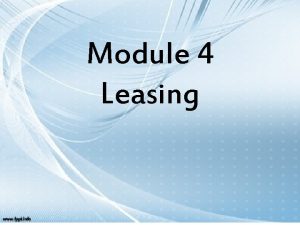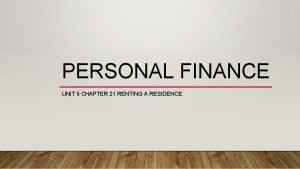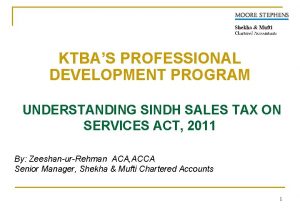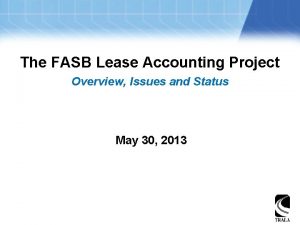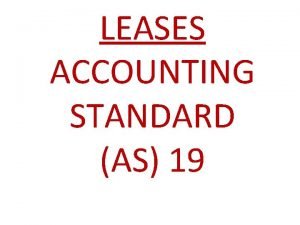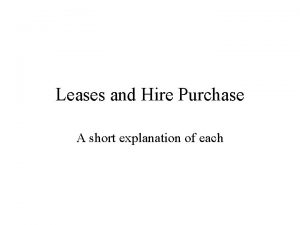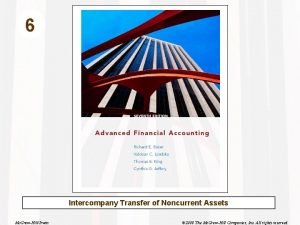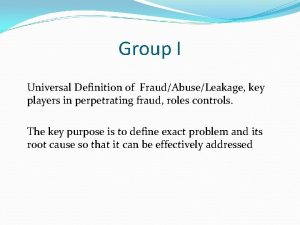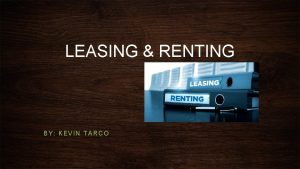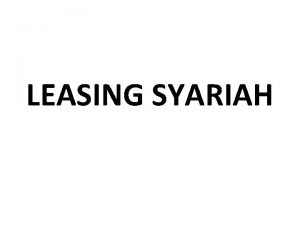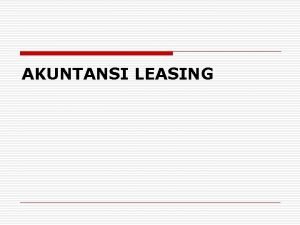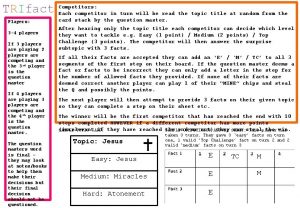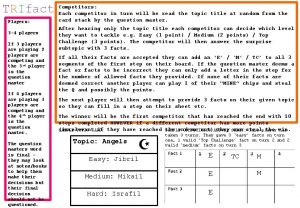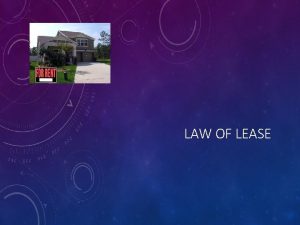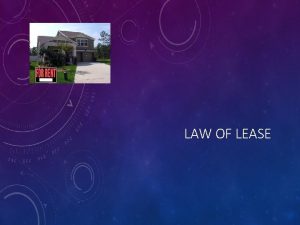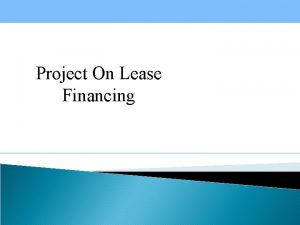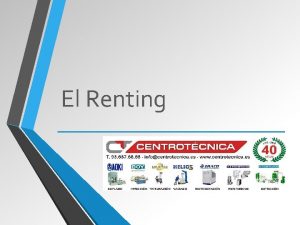Lease Accounting Lease Players Leasing renting an asset










- Slides: 10

Lease Accounting

Lease Players Leasing – renting an asset from a third party consistently for “the right to use” the property. Lessor – owner of the asset offering lease agreement for “the right to use” the property. Lessee – party in a lease agreement making payments to the owner for “the right to use” the property over the term of the lease.

Advantages of Leases 100% Financing – often requiring no money down Protection from obsolescence – some agreements may allow old asset models to be traded in for new asset models mid-lease term Flexible Contracts – less restrictive provisions than debt agreements.

Disadvantages of Leases Overall Cost of the Asset – In general, the costs of the asset over the life of the lease are higher than had the lessee purchased the asset. The lease payments must compensate the lessor for the use of the asset, financing costs, and the risk of ownership. Lack of Ownership – Unless the lease arrangement includes a transfer of ownership or a purchase option that is exercised, the asset does not belong to the lessee at the end of the lease.

Operating Lease (with term of less than 1 year) Lessor (owner) transfers only “the right to use” the property to the Lessee does not assume risk of ownership. Lessee reports lease payments as an operating expense on Income Statement. Lessee does NOT report the operating lease the Balance Sheet as an Asset or Liability.

Capital Lease Lessee assumes some risks of ownership and enjoys some benefits. Lessee will report a Capital Lease on the Balance Sheet as both an Asset and a Liability. Lessee will claim Depreciation Expense on the Asset and Interest Expense on payment of the Liability – exactly as if the property was purchased and financed with a loan agreement.

Criteria for Capital Lease Is there a transfer of ownership? Is there a Bargain Purchase Option? Is the term of the lease > or = 75% of the asset’s economic useful life? Is the present value of the lease payments > or = 90% of the fair value of the leased asset? If any one of these criteria are met, the lease must be reported as a Capital Lease on the Balance Sheet reporting both an Asset and Liability for the fair value of the lease agreement.

Additional Criteria for Lessor The Lessor must meet two additional criteria for a Capital lease Collectability of the lease payments must be reasonably predictable Lessors performance is substantially complete OR future costs are reasonably predictable.

New FASB Update **A new accounting standard for Leases, issued in January of 2016 will now require Lessees to Report all Operating Leases with terms >12 months on the Balance Sheet as a “Right to Use” Asset and Liability. The Asset and Liability will be measured at the present value of the Operating Lease payments. Standard will be in effect as of January of 2019.

See Lecture Note Examples for further illustrations.
 Operating lease
Operating lease Which best describes the benefits of renting a home
Which best describes the benefits of renting a home Chapter 21 renting a residence
Chapter 21 renting a residence Sindh sales tax on renting of immovable property
Sindh sales tax on renting of immovable property Renting tecnologico santander
Renting tecnologico santander Lease accounting project
Lease accounting project Lease accounting jokes
Lease accounting jokes As 19 leases
As 19 leases Hire purchase accounting treatment
Hire purchase accounting treatment Intercompany asset transfer accounting entries
Intercompany asset transfer accounting entries Key players definition
Key players definition
